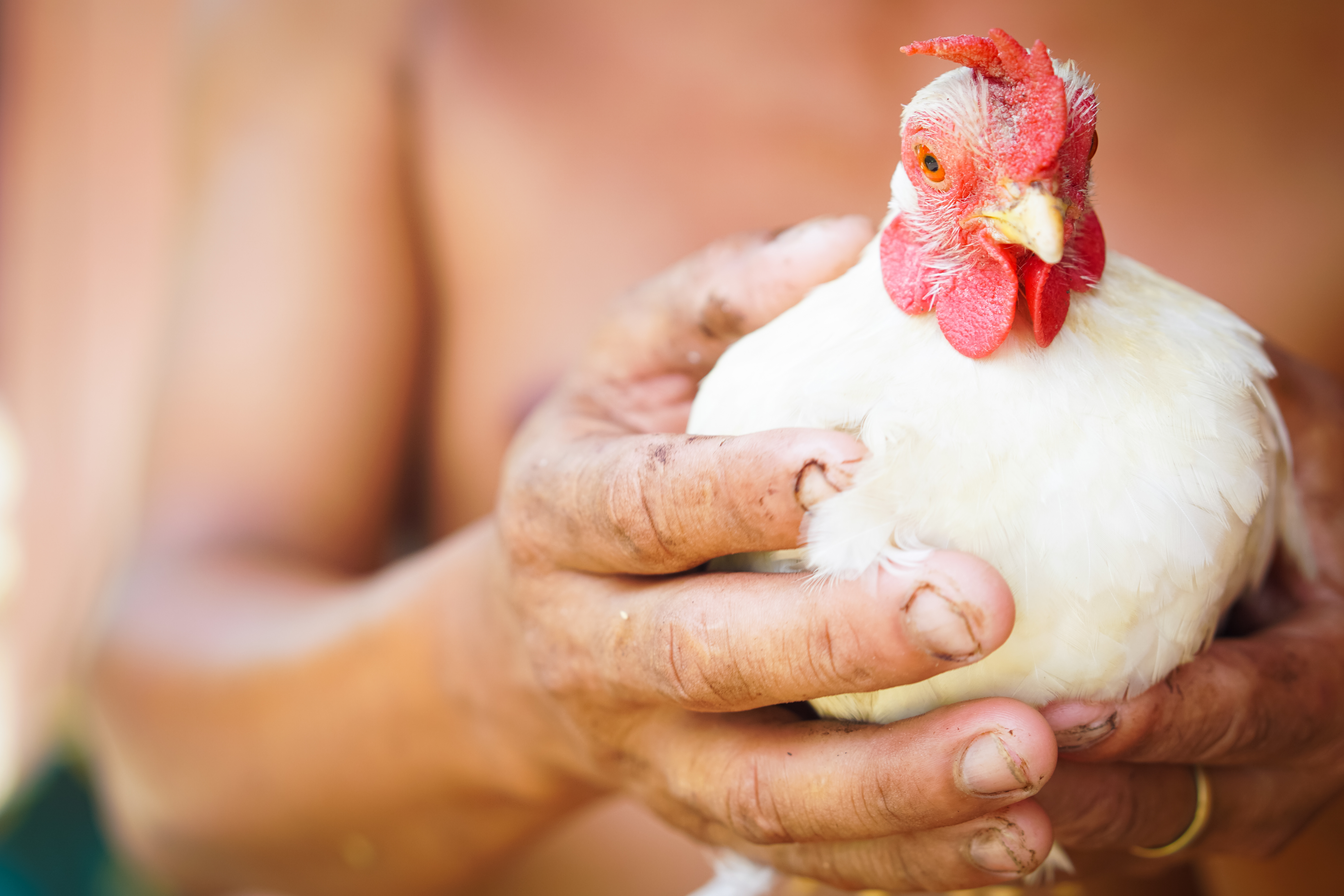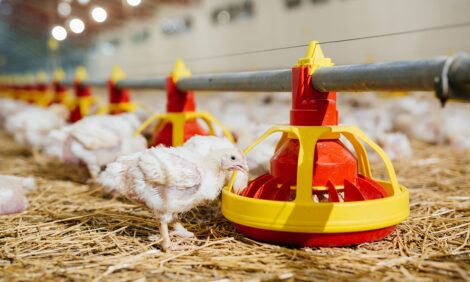



Why Zimbabwe’s consumers favour tough end-of-lay hens to tender broilers
Despite an uncertain economic climate, and having recently been hit by avian influenza, Zimbabwe’s domestic poultry market is growing rapidly – and consumers’ taste for end-of-lay hens means it’s win-win for the country’s egg farmers.Sis Bee’s Kitchen is a popular restaurant chain in Bulawayo, Zimbabwe’s second largest city, specialising in traditional cuisine. Customers choose from a range of dishes including isitshwala (a word from the local Ndebele language that describes any thick, cereal-based paste) cooked from sorghum and finger millet meal, in addition to the staple, maize-meal-based isitshwala. Those who select the sorghum or finger millet isitshwala often complement it with white meats – such as fish, indigenous chicken (known colloquially as road-runners) or end-of-lay chicken.
“That gives us the edge over our competition,” says a member of staff at one Sis Bee’s Kitchen outlet. “Our society is getting more perceptive about their food and physical well-being. They like their traditional chicken. But because road-runners have not been commercialised that much yet, we are under-supplied – hence end-of-lay chickens, which are grown commercially, come in. It tastes just like the road-runner.”
Although the end-of-lay chickens are technically an exotic species, they resemble the road-runner in their hardiness – and the lean nature of their meat. Having rendered much value already in terms of the eggs they’ve laid, spent hens give the farmer more when they are bought by restaurants and individuals who crave their almost fat-free meat.

For instance, Mugove Nyoni, a Bulawayo fitness enthusiast says: “I grew up eating the road-runner. I like the toughness of its meat; you almost get no fat in it and it’s tasty like the off-layer.”
Off-layers cost about USD$7 per bird – $3 cheaper than a broiler. Therefore, aside from being attractive because of its perceived health benefits, off-layer meat is increasingly popular due to its lower price.
Rainbow, one of Bulawayo’s biggest hotels, serves traditional food every Wednesday and Friday. End-of-lay and indigenous chickens and sorghum and finger millet meal isitshwala are part of its menu.
“We serve them but the farmer or anyone selling them must represent a company that has a valid tax-clearance certificate,” says Samukele Nkhata, a buyer at the hotel.
While demand from hotels and restaurants is evenly spread across the year, the Christmas period presents opportunities for farmers to sell big volumes directly to consumers hosting weddings and parties.
Like most local farmers, Naomi Bhebhe, who farms in Nyamandlovu, 18 miles west of Bulawayo, does not operate as part of a company, and therefore does not have a tax-clearance certificate. As a result, she is unable to sell directly to Rainbow or Holiday Inn, another leading Bulawayo hotel.
“We have a batch of 9,000 hens that is at point-of-lay,” she says. “In terms of our production cycle, we are getting rid of the older hens to make way for the younger ones. We are fortunate that this Christmas period coincides with one batch being sold off and a newer one coming in. December, as you know, is Zimbabwe’s party month, so it should be easy for us to sell.”

A buyer at one of the city’s hotels says farmers such as Bhebhe, who lack tax certificates, could, in theory, sell to his hotel using other people’s documents. This smacks of criminality but is widely practised in Zimbabwe with little risk of prosecution.
The southern African country, which produces some 15 million dozens of table eggs yearly, is recovering from a bird flu outbreak that saw 180,000 breeding hens being culled last year, resulting in a shortage of day-old chicks. To help revive output, the government suspended duty on imported fertilised eggs in September 2017. The waiver expired in January this year, but will be renewed for a year from 1 January 2019.
According to agricultural economist and newspaper columnist Mhlupheki Dube, egg farmers are paid less for their hens than for broilers. This is somewhat advantageous as the lower price helps them to move big volumes faster when their birds age.
“The value of the layer is in the egg but that of a broiler is in the meat. Therefore, at the end-of-lay stage, the hen would have done its job and what the farmer gets is its residual value. For that reason $7 per bird is actually an attractive price because the hen has already given the farmer about 900 eggs over its production period of 30 months or so”
Some farmers feed their end-of-lay hens on broiler finisher to fatten them, but Bhebhe says doing so destroys the birds’ culinary appeal.
“The reason why customers buy our hens is their leanness. Now, if a farmer fattens the layer he or she is no different from a broiler farmer who strives to achieve weights as high as 2.8kg to 3kg of high-fat birds,” she said.
Reneth Mano, an agricultural economist at the Zimbabwe Poultry Association agrees with her. “A road-runner is popular because it eats the diet of a road-runner. It is raised under the conditions in which road-runners are raised, not those of a broiler,” he says. “So if you want to transform an end-of-lay hen into a broiler you are making a mistake. The market which seeks leaner meat will have no business with you just as they have no business with broiler meat.”
Overall, demand for chicken has grown so rapidly this year that producers are chasing demand, says Mano. Chicken consumption, he adds, has risen by 41 percent.
"The reason why customers buy our hens is their leanness. Now, if a farmer fattens the layer he or she is no different from a broiler farmer who strives to achieve weights as high as 2.8kg to 3kg of high-fat birds."
-Mhlupheki Dube-
“We are bullish about 2019,” he continues. “If we take care of our foreign-currency situation to import soya and vitamins, growth will continue. A drought has been forecast but we are entering it with surplus stocks of maize, a key ingredient in the manufacture of chickenfeed. The poultry industry needs 300,000 to 400,000 tonnes of maize yearly for chickenfeed. As we speak the Grain Marketing Board has more than that in stock. So, yes, we are facing a drought, but I don’t see it affecting the supply of chickenfeed next year.”
His optimism will depend on reliable foreign-currency availability, but the events of the past two months might dash his hopes and those of poultry farmers in general.
In early October the bond, a surrogate local currency, depreciated by more than 600 percent against the US dollar with which it officially trades at par. Although it had recovered to 300 percent by end of November, the margin has remained too wide. Stockfeed prices have shot up to $42 (bond) per 50kg bag from $28 in September. Vaccine prices have risen sharply too, and most suppliers are rejecting payment through the bond, preferring the US dollar or the South African rand, currencies which most farmers do not have access to. Inflation accelerated to 20.85 percent in October, the first time in nine years it has been in double-digit territory.
As Thomas Nherera, a former president of the Zimbabwe Commercial Farmers’ Union, has said, “The tax incentive is useful but inflationary pressures should be contained for the industry to fully recover from bird flu and grow next year.”








